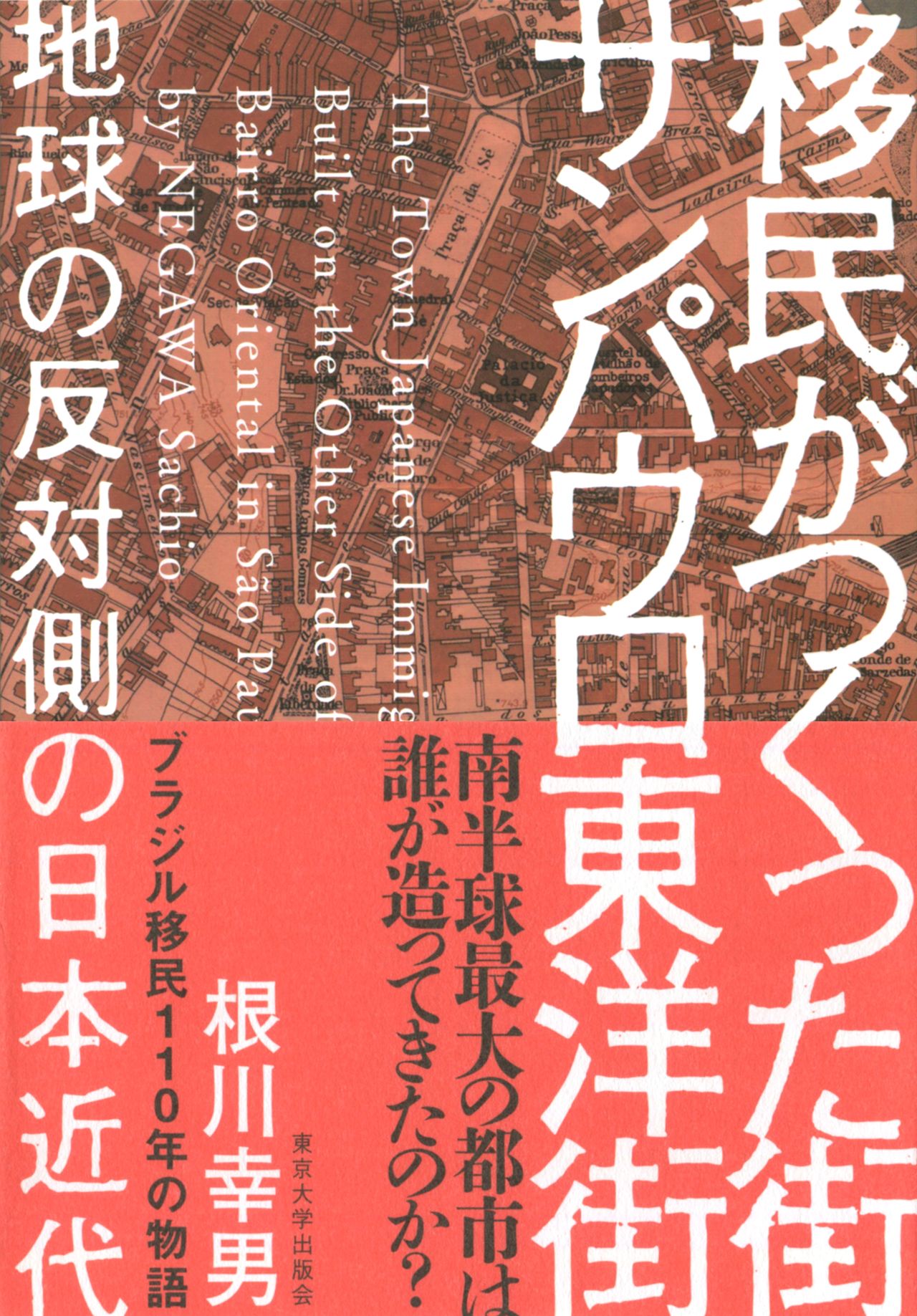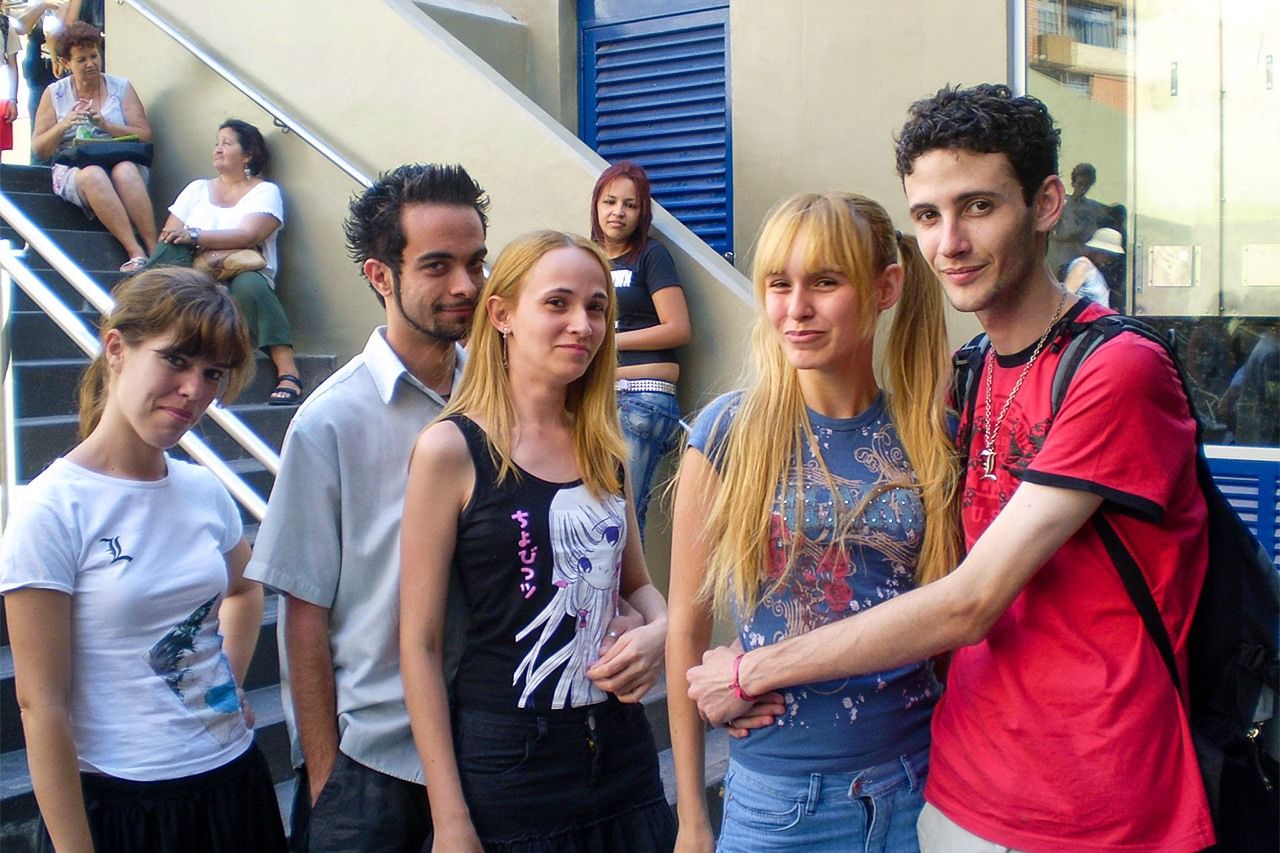
São Paulo’s Asiatown: A Little Piece of Japan Halfway Around the Globe
Society- English
- 日本語
- 简体字
- 繁體字
- Français
- Español
- العربية
- Русский
Japanese neighborhoods, such as Little Tokyo in Los Angeles and Vancouver’s Powell Street Area, can be found around the world, but Bairro Oriental, in São Paulo, is perhaps the biggest.

Imin ga tsukutta machi San Pauro Tōyōgai: Chikyū no hantaigawa no Nihon kindai (The Town Japanese Immigrants Built on the Other Side of the World: Bairro Oriental in São Paulo).
This Asiatown, in the center of São Paulo, South America’s largest city, measures roughly 500 meters east-west and 1,500 meters north-south. It is one of the city’s key tourist attractions, known in Portuguese as Bairro Oriental, or by the name of the local subway station, Liberdade. Migration from Japan to Brazil started early in the twentieth century, and steadily grew. Through many ups and downs, the Japanese-Brazilian population has reached around 1.9 million, the largest worldwide, making Liberdade the largest ethnically Japanese settlement outside of Japan.
When I first visited Brazil in 1992, I was taken straight from the airport to Bairro Oriental. After spending 17 years in Brazil, I published a book about the history of the neighborhood in July 2020. It recounts stories of Japanese people who traveled halfway around the world, and the community they created over the span of a century.
Japanese Cinemas Spark the Rise of Japantown
Mass immigration from Japan to Brazil began with the Kasato Maru, which sailed from Kobe to Brazil in 1908. The ship carried nearly 800 migrants, most of whom were contracted to work on coffee plantations inland of São Paulo. Around 10 were free migrants, who settled in the city.
In the 1910s, scores of laborers in São Paulo state deserted farm work and moved to the city. Many settled near the long, sloping Conde de Salzedas Street, forming the first Japanese community. Later, as their economic standing improved, they shifted uphill, and “Japantown” expanded. The neighborhood saw increased Japanese migration and greater prosperity in the 1930s, but with the outbreak of the Pacific War, people of Japanese ethnicity were denounced as foreign enemies.
Following the war, Japantown grew around Galvão Bueno Street. Surprisingly, the change was mostly triggered by the opening of Brazil’s first Japanese movie theater, Cine Niterói, in July 1953. Cine Niterói was founded by Tanaka Yoshikazu, a first-generation Japanese grain broker.
The five-story complex was located along Galvão Bueno Street, just below Liberdade Plaza, where Osaka Bridge is today. It was a cultural and entertainment center for the Nikkei community. The first-floor cinema had capacity for an audience of 1,500, while the upper floors housed a restaurant, hall, and hotel. On weekends, the area around the cinema thronged with crowds in search of entertainment. Later, three rival cinemas launched nearby: the Nanbei Gekijō, Cine Tokyo, and Cine Nippon. Restaurants and other shops also opened to cater to the crowds, creating a shopping district somewhat reminiscent of Japan.
![Facade of the Cine Niterói (from Colonia Geinoshi [History of Art and Entertainment in the Japanese Brazilian Colony])](/en/ncommon/contents/japan-topics/480990/480990.jpg)
Facade of the Cine Niterói (from Colonia Geinoshi [History of Art and Entertainment in the Japanese Brazilian Colony])
In April 1964, the São Paulo Nihon Bunka Kyōkai (São Paulo Japan Culture Association) Center Building, later the Brazil Nihon Bunka Fukushi Kyōkai (Brazilian Society for Japanese Culture and Social Assistance), was constructed south of Galvão Bueno Street, at the intersection with São Joaquim Street. Initially, the building had four floors and an area of 3,734 square meters, but it was subsequently enlarged. It was quite striking because, although Liberdade is a high-rise district today, in those days, it was mostly aging two-story structures. The Japanese cinemas and shopping area, combined with the cultural center, formed the core of what later evolved into Bairro Oriental.

The present-day Brazil Nihon Bunka Fukushi Kyōkai (Brazilian Society for Japanese Culture and Social Assistance).
Chinese and Korean Immigration Transforms the Area
During the 1960s and 1970s, the Japanese street of Galvão Bueno came under threat from a revamp of the inner city, and subway construction. Cine Niterói was forced to relocate to the main street of Liberdade to make way for an expressway. Many other businesses left due to the ongoing construction. But community leaders including Tanaka Yoshikazu and the entrepreneur Mizumoto Tsuyoshi turned this into an opportunity to develop the neighborhood.
In November 1974, the area was reborn with the addition of a torii (shrine gate), hanging lanterns, and a Japanese garden, and it was rechristened Bairro Oriental. New events were introduced, including a Tōyōichi (Asia market), hana-matsuri (floral festival celebrating the Buddha’s Birthday), Tanabata festival, and mochitsuki (rice-cake pounding) festival. These celebrations were based on Japanese traditions, tailored to the local culture.

The Japanese garden on Galvão Bueno Street in São Paulo’s Bairro Oriental.

Tanzaku upon which people write wishes during the Tanabata star festival.

Liberdade Square comes alive during the weekend Tōyōichi market days.
The 1960s saw an influx of immigrants from Taiwan and South Korea. Many spoke Japanese, due to their history as former Japanese colonies, and so they came to Bairro Oriental seeking information in a language they knew. As time passed, they became key members in the community, and were joined by immigrants from mainland China in the 1990s.
Now, Conselheiro Furtado Street, at the eastern edge of Bairro Oriental, is home to the São Paulo Chinese cultural center, the Cantonese Association of Brazil, the Kodoin Kwan Yin Temple of Brazil, and other facilities of the Chinese community, along with Taiwanese and Chinese shops and restaurants. Japanese businesses now sit among Chinese supermarkets, hotels, bars and eateries, karaoke joints, hair and beauty salons, doctors, travel companies, schools, and so on. It has started to feel like a mini-Chinatown.

The São Paulo Chinese cultural center on Conselheiro Furtado Street.







